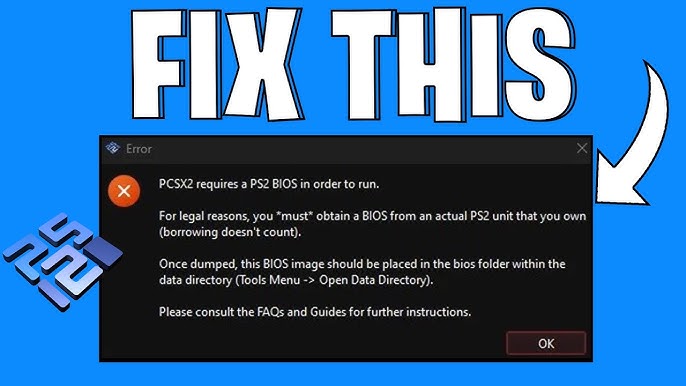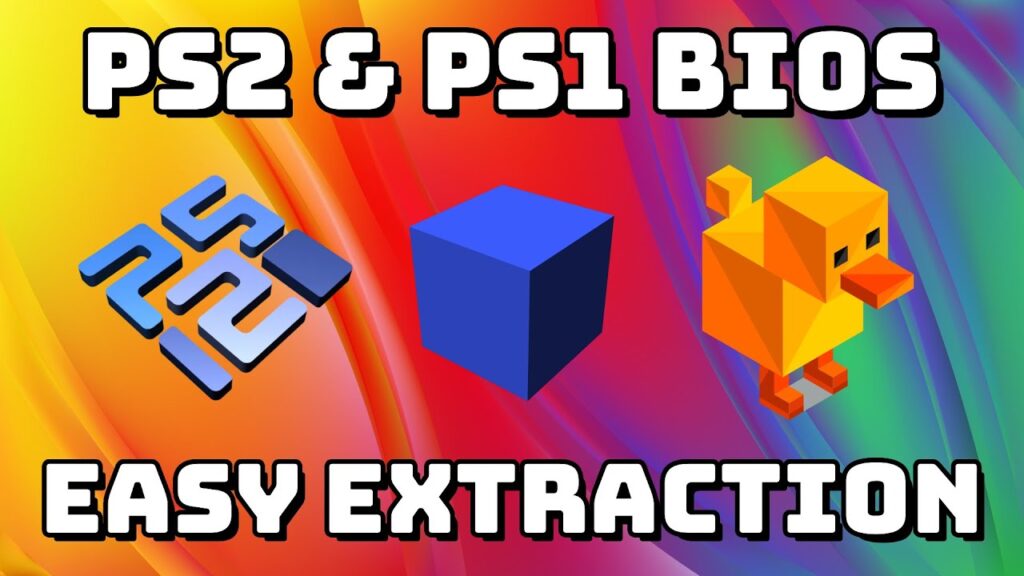Introduction to PS2 BIOS
If you’ve ever dusted off your PlayStation 2 and dove into the vast library of retro games, you know there’s something uniquely magical about that experience. But have you ever stopped to think about what makes all those nostalgic titles run smoothly? Enter the PS2 BIOS—the unsung hero behind every pixelated adventure and epic battle.
Whether you’re a seasoned retro gamer or just starting to explore this classic console, understanding the PS2 BIOS can enhance your gaming experience in ways you might not expect. Let’s embark on this journey through time, unraveling the secrets of the PS2 BIOS and why it matters for anyone eager to relive their favorite childhood memories.
What is BIOS, and why is it important for retro gaming?
BIOS, or Basic Input/Output System, is a crucial component in retro gaming. It acts as the bridge between the hardware and software of your console. For PS2 enthusiasts, understanding BIOS is key to unlocking the true potential of their gaming experience.
Without BIOS, games wouldn’t run smoothly. It initializes system settings and ensures that everything from graphics to audio functions correctly. This makes it an essential element for classic titles.
For those using emulators, having the right PS2 BIOS file can make or break gameplay quality. Emulators rely on these files to replicate the original console’s behavior accurately.
BIOS updates often introduce new features or enhance compatibility with various games. Retro gamers looking to relive their childhood favorites will find BIOS indispensable in recreating that nostalgic experience seamlessly across platforms.
The Evolution of PS2 BIOS
The evolution of PS2 BIOS is a fascinating journey through gaming history. Initially, the PlayStation 2 launched its first version in March 2000, setting the groundwork for an era of immersive gameplay.
This early BIOS supported a limited range of features. As developers began to explore its potential, updates emerged that introduced enhancements and fixes. Each iteration brought improved compatibility with games and hardware peripherals.
With time, the BIOS transitioned from basic functionalities to advanced system management options. It enabled better performance optimization and provided support for online capabilities as gaming networks evolved.
These advancements reflected not just technological progress but also gamers’ increasing expectations. The PS2 BIOS played a crucial role in shaping how we interact with our favorite titles today. Its legacy continues to influence retro gaming enthusiasts around the world who cherish those classic experiences.

The Different Versions of PS2 BIOS and Their Features
The PlayStation 2 BIOS has several versions, each tailored for specific console models. The primary distinction lies in the region coding—Japan, North America, and Europe all have their unique BIOS files.
The Japanese version is often sought after for its speed and performance. It boasts an efficient boot process that many gamers appreciate. On the other hand, the North American BIOS offers compatibility with a wider array of games released in that region.
European versions include features like language support options. This allows players to enjoy titles in multiple languages without hassle. Certain revisions fixed bugs found in earlier releases. These improvements can enhance gameplay stability significantly.
Understanding these differences helps retro gamers choose the right BIOS for their needs while optimizing their gaming experience on emulators or original hardware setups.
How to Install and Update PS2 BIOS
To install and update your PS2 BIOS, you first need to locate a reliable source for the BIOS files. Websites dedicated to retro gaming often host these files but ensure they are legitimate and safe.
Once you’ve downloaded the required BIOS file, it’s usually in a compressed format. Extract it using any standard compression software. You’ll typically find several versions within this file. Next, open your PlayStation 2 emulator settings or folder where the ROMs are stored. Locate the option for adding or updating BIOS files—this varies between emulators like PCSX2 and others.
Copy the extracted BIOS file into this directory. Restart your emulator after making changes so it can recognize the new files properly. Check for updates regularly to keep up with any enhancements or fixes that might enhance your gaming experience further.
Troubleshooting Common Issues with PS2 BIOS
Encountering issues with your PS2 BIOS can be frustrating. Fortunately, many problems have straightforward solutions.
One common issue is the failure to boot games. This could stem from an outdated BIOS version. Ensure you’re using the latest one for optimal compatibility with various titles.
If you’re experiencing graphical glitches or crashes during gameplay, it might be related to incorrect settings in your emulator or hardware configuration. Double-check these settings and adjust them as needed. Another frequent problem arises when trying to run specific game backups. Make sure that your ISO files are not corrupted and that they match the format supported by your emulator.
If you face audio issues—like distortion or lag—consider tweaking the sound emulation settings within your software. Sometimes, a simple adjustment can enhance overall performance significantly.
FAQs About PS2 BIOS
1. What is PS2 BIOS?
PS2 BIOS (Basic Input/Output System) is the firmware required to boot and operate a PlayStation 2. It is essential for emulating PS2 games on PC using software like PCSX2.
2. Why do I need PS2 BIOS for emulation?
PS2 BIOS is necessary because it contains the system instructions required to run PS2 software. Without it, an emulator like PCSX2 cannot function properly.
3. Is it legal to download PS2 BIOS?
Downloading PS2 BIOS from the internet is illegal unless you own the original PlayStation 2 console and extract the BIOS yourself. Using BIOS obtained from unauthorized sources violates copyright laws.
4. How can I legally get PS2 BIOS?
To legally obtain PS2 BIOS, you need to dump it from your own PlayStation 2 console using homebrew software like BIOS Dumper. This ensures you’re using a legal copy.
5. Can I use any region’s PS2 BIOS with PCSX2?
Yes, PCSX2 supports BIOS from different regions (NTSC-U, NTSC-J, PAL), but certain games may require a specific region’s BIOS for compatibility.
6. Where do I place the PS2 BIOS in PCSX2?
After extracting your BIOS file, place it in the “bios” folder inside your PCSX2 installation directory. Then, select it within PCSX2’s BIOS settings.
7. Why is my PS2 BIOS not working in PCSX2?
Common reasons include:
- Incorrect BIOS file format (should be .bin, .rom, .scph format)
- BIOS files placed in the wrong directory
- Corrupt or incomplete BIOS dump
8. Can I use PS2 BIOS on Android emulators?
Yes, emulators like AetherSX2 for Android require a PS2 BIOS to function properly. The setup process is similar to PCSX2.
9. Does PS2 BIOS affect game performance?
Yes, using the correct BIOS version for your region and system can improve compatibility and reduce glitches in PCSX2. However, performance also depends on your PC’s specs and emulator settings.
10. Can I update or change my PS2 BIOS in PCSX2?
Yes, you can replace or update your BIOS by adding new BIOS files to the bios folder and selecting the desired version in PCSX2’s settings.
Conclusion: Embrace the Nostalgia of Retro Gaming with PS2 BIOS
Embracing the nostalgia of retro gaming through PS2 BIOS opens up a world of memories and experiences. The PlayStation 2 was not just another console; it represented a golden era in gaming history. Understanding PS2 BIOS is essential for anyone looking to relive those classic moments or discover them for the first time.
With its various versions, each offering unique features, players can enhance their experience significantly. Whether you’re diving back into favorites like “Final Fantasy X” or exploring lesser-known gems, having the right BIOS can make all the difference.
Installing and updating your PS2 BIOS might seem daunting at first, but navigating this process unlocks countless possibilities. Troubleshooting common issues also becomes easier once you know what to look out for.
So grab that controller and get ready to dive into an unforgettable journey through some of gaming’s most iconic titles. With PS2 BIOS as your guide, there’s no limit to the adventures waiting just around the corner. Embrace this opportunity to cherish past joys while creating new ones along the way.


